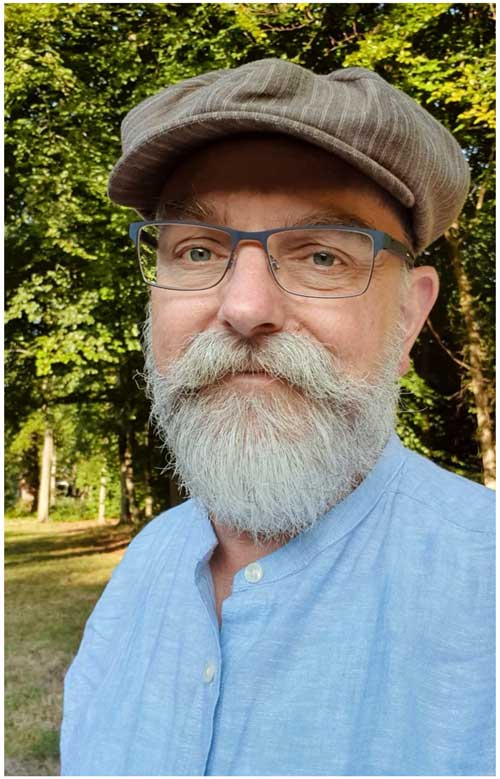Preface to the special issue “EarthCARE Level 2 algorithms and data products”: Editorial in memory of Tobias Wehr
The Earth Cloud, Aerosol and Radiation Explorer (EarthCARE; Illingworth et al., 2015) is a joint ESA–JAXA satellite mission whose launch is planned for May 2024. With the climate crisis becoming ever more acute, coupled with an increased occurrence of extreme events, the need to improve both weather forecasts and climate projections has never been greater. Cloud, aerosol and radiation processes remain key areas of uncertainty in climate modelling; moreover, in recent years, we have seen the advent of global kilometre-scale convection-resolving models that are in urgent need of evaluation at a commensurate level of detail and resolution. With the decommissioning of NASA's CloudSat and CALIPSO satellites in 2023, the launch of EarthCARE could therefore not come at a more opportune time. The unique aspect of EarthCARE compared with all previous missions is the combination of novel instruments on one platform working in synergy, not only to retrieve more accurate properties of clouds, aerosols and precipitation but also to provide independent in-orbit verification of their impact on radiative fluxes. EarthCARE also includes, for the first time, the ability to sense vertical motion at convective scales from space (e.g. Hagihara et al., 2023). The data will be available in near-real time, enabling them to be assimilated into forecast models (Janisková and Fielding, 2020). In addition, it will be possible to provide a near-continuous climate record of clouds and aerosols spanning from CloudSat and CALIPSO through to EarthCARE (Feofilov et al., 2023; Okamoto et al., 2020).
The papers in this special issue of Atmospheric Measurement Techniques provide potential users with a detailed description of the algorithms that will be run operationally on the EarthCARE measurements as well as the meteorological products that will be produced. Wehr et al. (2023) describe in detail the unique instrumental payload, including a Doppler cloud radar, a high-spectral-resolution lidar (HSRL), a multi-spectral imager and a three-view broadband radiometer, while Eisinger et al. (2024) describe the flow of data, from the Level-1 raw observational and auxiliary datasets to the Level-2a single-instrument products and Level-2b multi-instrument products, as well as providing a complete list of references to the algorithms to be run operationally on EarthCARE data. In order to test the scientific and technical functioning of the algorithms before launch, synthetic Level-1 measurements have been generated from simulations by the Nonhydrostatic Icosahedral Atmospheric Model (NICAM) and the combination of simulations by the Canadian Global Environmental Model (GEM) and the Copernicus Atmosphere Monitoring Service (CAMS), using a suite of sophisticated instrument simulators (Qu et al., 2023; Roh et al., 2023; Donovan et al., 2023). With many of the subsequent papers using the simulated scenes to demonstrate the performance of a particular algorithm, it has also been possible to perform a preliminary intercomparison of the various algorithms (Mason et al., 2024). Embarking four instruments on the same platform, while hugely challenging, presents unique opportunities to exploit instrument synergy to distinguish the multitude of cloud, aerosol and precipitation particle types in the atmosphere as well as to infer key microphysical and radiative properties (e.g. Mason et al., 2023; Haarig et al., 2023), such as particle size. Moreover, as part of the routine processing of the observations, both 1D and 3D radiative transfer calculations will be performed on the retrievals (Cole et al., 2023) and compared to the broadband radiation observations, aiming for “radiative closure”: a complete, radiatively consistent description of the atmosphere beneath the satellite. This has never before been attempted as part of the standard data processing of a meteorological satellite, yet it has the potential to be immensely powerful for evaluating and improving climate and weather models, enabling not only diagnosis of radiative errors in models but also their specific causes in terms of cloud and aerosol properties.
Each of us on the editorial team of this special issue have been involved in preparation for the launch of EarthCARE for at least 17 years; thus, we are acutely aware that the success of such a complex endeavour is dependent on not only the scientists involved but also the dedication of a very large team of engineers and others. EarthCARE's 25-year path from original concept to completed satellite awaiting launch has been a rocky one, for much of this time with at least one of the four instruments having severe problems. Guiding us through most of this journey has been ESA's EarthCARE mission scientist, Dr Tobias Wehr (Fig. 1), who tragically passed away on 1 February 2023 at the age of 57. His passion, wisdom and diplomacy have been critical to overcoming all of these challenges without any compromise on the original mission concept built around the synergy of four instruments. Thanks to Tobias's unwavering vision, EarthCARE is a hugely ambitious mission, with a processing chain far more complex than any of ESA's previous Earth Explorer satellites. We are extremely grateful for his many years of dogged support to the scientists developing the algorithms described in this special issue and are, therefore, honoured to dedicate it to his memory.






